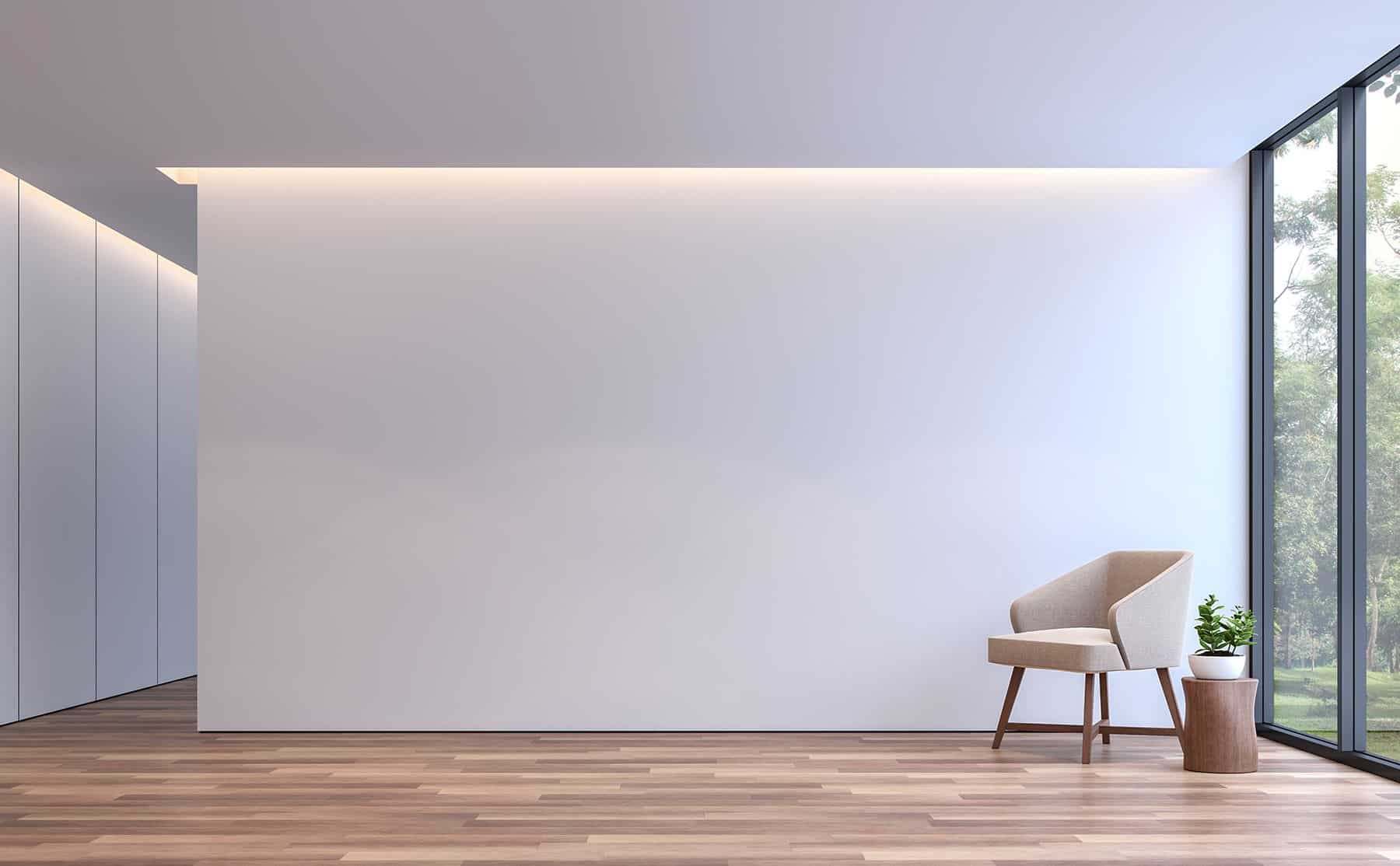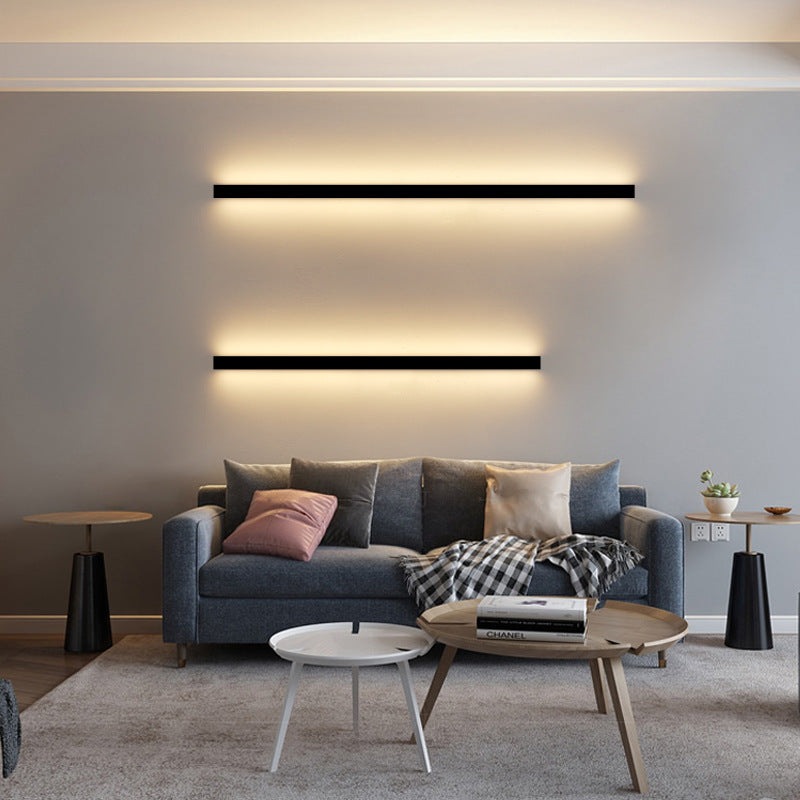Minimalist lighting creates a clean and serene space. It focuses on simplicity and functionality.
This design trend is about using fewer elements to achieve more impact. A minimalist approach to lighting can transform your home into a calm oasis. It is not just about reducing clutter but enhancing the aesthetic and mood. Imagine a space where light is carefully curated to highlight your decor.
Minimalist lighting uses sleek designs and neutral colors. It draws attention to key features without overwhelming the senses. This style is perfect for those who appreciate elegance in simplicity. Whether you are updating your living room or bedroom, minimalist lighting offers a refreshing change. Discover how this design can make a big difference with small changes.
The Essence Of Minimalist Lighting
Minimalist lighting is more than just a design trend—it’s an art form that focuses on the beauty of simplicity. As you consider updating your home, minimalist lighting offers a fresh approach that balances functionality with elegance. Imagine walking into a room where light itself becomes a centerpiece, enhancing your space without overpowering it.
Simplicity And Style
Minimalist lighting captures the essence of simplicity, stripping away unnecessary elements. It’s about choosing fixtures that serve a purpose and blend seamlessly with your interior. Picture a sleek pendant light that adds a touch of sophistication without cluttering the room.
In my own home, I swapped out bulky chandeliers for streamlined LED strips. The result? A clean, modern look that brightens the room without stealing the show. Have you thought about how lighting can transform your space?
Impact On Interior Design
Minimalist lighting can dramatically impact your interior design. It allows other design elements in your room to shine. A strategically placed floor lamp can highlight a piece of art or a cozy reading nook.
Consider the atmosphere you want to create. Soft, warm lights can make a space inviting, while cooler tones can energize and invigorate. How does your current lighting setup affect your mood?
Don’t underestimate the power of lighting in setting the tone for your room. Experimenting with different minimalist lighting options can lead to surprising results. Which areas of your home could benefit from a lighting makeover?
:strip_icc()/IMG-51-f12a4305d86c408b91346189ab288629.jpg)
Choosing The Right Fixtures
Choosing the right fixtures for minimalist lighting is essential. These fixtures define the mood and style of your space. A minimalist approach focuses on simplicity and functionality. It uses clean lines and subtle elegance. The right fixtures blend seamlessly with your decor. They provide adequate lighting without overpowering the space. Let’s explore various types and materials that suit minimalist lighting.
Types Of Minimalist Lights
Pendant lights offer focused lighting and a sleek look. They are ideal for dining areas or kitchen islands. Floor lamps add height and style to corners or seating areas. Wall sconces save space and add subtle lighting to hallways. Recessed lighting provides a clean, modern look for ceilings. Track lighting is versatile, allowing you to direct light where needed. Each type serves a specific purpose in minimalist design.
Materials And Finishes
Metal fixtures add an industrial feel to minimalist spaces. Choose brushed nickel or matte black for a contemporary look. Glass elements offer a touch of elegance and sophistication. Wood brings warmth and natural texture to minimalist lighting. Consider light oak or walnut finishes for a cozy atmosphere. Acrylic materials offer a modern, lightweight option. Each material contributes to the overall aesthetic of your minimalist decor.
Creating Ambiance
Creating ambiance in a room depends heavily on lighting choices. Minimalist lighting can transform spaces with subtle elegance. It enhances the mood without overwhelming the senses. Choosing the right light temperature and control options is crucial. It shapes the feel of any environment.
Light Temperature
Light temperature affects the mood of a room. Warm lights create a cozy atmosphere. Cooler lights provide a more energetic feel. For relaxation, choose soft, warm temperatures. In workspaces, cooler lights boost focus. Understanding light temperature is key to setting the right mood.
Dimming And Control
Dimming options add flexibility to your lighting design. Adjust brightness to fit different occasions. Lower light for a calming effect. Increase brightness for energy. Control systems make it easy to switch between settings. Smart lighting systems can automate changes. They simplify ambiance adjustments with a touch.
Placement Strategies
Placement strategies in minimalist lighting can dramatically transform a space. These strategies focus on how and where to position lights for maximum effect. Proper placement enhances the room’s aesthetics and functionality. It creates a harmonious balance between light and shadow. Two key strategies include highlighting key areas and balancing light sources.
Highlighting Key Areas
Highlighting key areas draws attention to specific parts of a room. Use spotlights to emphasize artwork or architectural features. Position lights above a dining table to create a focal point. Floor lamps can accentuate reading nooks. Wall-mounted lights work well in hallways or by mirrors. Choose warm light to add a cozy feel. Cool light suits modern, sleek spaces. Highlighting key areas defines room sections without clutter.
Balancing Light Sources
Balancing light sources ensures a room feels inviting and complete. Combine overhead lights with floor or table lamps. This mix creates layers of light, adding depth to a space. Use dimmable lights for flexibility in brightness. Soft lighting in living rooms encourages relaxation. Brighter lights in kitchens and workspaces improve focus. Avoid shadows by placing lights at different heights. This balance prevents harsh contrasts and maintains a comfortable atmosphere.
Integrating With Decor
Integrating minimalist lighting with decor creates a unified and serene space. Lighting isn’t just functional; it enhances the room’s overall aesthetic. The right lighting complements furniture and harmonizes colors, bringing a cohesive look to any room.
Complementing Furniture
Minimalist lighting fixtures work well with modern furniture styles. Sleek lines of lamps pair beautifully with contemporary tables and chairs. Choose simple pendant lights to accentuate minimalist sofas. This creates a clean and uncluttered look. Wall-mounted fixtures can highlight unique furniture pieces. They draw attention without overpowering the room’s design.
Harmonizing Colors
Lighting plays a crucial role in color harmony. Soft, neutral lights blend seamlessly with muted tones. They enhance the room’s calm atmosphere. Choose fixtures in colors that match or complement the room’s palette. Warm lights can soften bold colors. Cool lights add crispness to pastel shades. Adjusting light intensity can also affect color perception. Dim lights create a cozy ambiance. Bright lights make spaces feel open and airy. Properly harmonized colors create a visually appealing environment.
Energy Efficiency
Energy efficiency is not just a buzzword. It’s a critical consideration in our pursuit of sustainability. Minimalist lighting offers a smart, stylish way to reduce your energy footprint. Imagine lowering your electricity bill while enhancing your home’s ambiance. This section dives into practical strategies you can adopt in your lighting choices.
Led Options
LED lights are game-changers in energy-efficient lighting. These little bulbs use up to 80% less energy than traditional incandescent bulbs. They last longer, too, reducing waste and replacement costs. Picture your home glowing beautifully while saving money.
LEDs come in various shapes and colors, making it easy to match your minimalist style. You can select cool whites for a sleek look or warm tones for a cozy vibe. Have you tried dimmable LEDs? They allow you to adjust brightness and save even more energy. Consider them for your next lighting purchase.
Sustainable Practices
Choosing energy-efficient lighting is just one part of the sustainability puzzle. How you use and dispose of these lights matters too. Start by using natural light whenever possible. Open curtains or blinds during the day to minimize the need for artificial lighting.
When LEDs reach the end of their lifespan, recycle them. Many local communities offer recycling programs. By doing this, you prevent harmful materials from entering landfills. This small action contributes to a healthier planet.
Energy-efficient lighting is an easy first step toward a more sustainable lifestyle. What’s stopping you from making the switch? Embrace minimalist lighting and enjoy a brighter, greener future.
Maintenance And Care
Minimalist lighting offers sleek designs and subtle elegance. Keeping these fixtures in top shape is vital. Proper maintenance ensures longevity and optimal performance. Regular care enhances their beauty and functionality. Let’s explore effective ways to maintain minimalist lighting.
Cleaning Techniques
Dust accumulates quickly on lighting fixtures. Use a soft, damp cloth to clean surfaces. Avoid harsh chemicals; they can damage finishes. For glass parts, use mild soap and water. Dry immediately with a clean, soft cloth. This prevents streaks and water spots. Regular cleaning keeps lights bright and attractive.
Longevity Tips
Choose LED bulbs for energy efficiency and longer life. Check connections regularly to ensure tight fittings. Loose connections reduce efficiency and safety. Avoid overloading circuits with too many fixtures. This can cause short circuits. Schedule routine checks to identify potential issues early. Replace worn parts promptly to prevent further damage.

Trends In Minimalist Lighting
Minimalist lighting is gaining popularity for its sleek and simple designs. It transforms spaces with a touch of elegance and clarity. This lighting style focuses on functionality and aesthetics. The trend is moving towards innovative designs and smart solutions. People are choosing minimalist lighting to create calm and serene environments. It enhances the mood and atmosphere without overpowering the space.
Innovative Designs
Innovative designs in minimalist lighting prioritize clean lines and simple forms. Designers are using materials like metal and glass. These materials add a modern touch to the lighting fixtures. Pendant lights with geometric shapes are trending. They offer a unique and artistic flair. Slim and linear fixtures are popular in kitchens and offices. They provide focused illumination without cluttering the space.
Smart Lighting Solutions
Smart lighting solutions are now part of minimalist trends. These systems allow control of lights with a smartphone or voice commands. Users can adjust brightness and color temperature easily. Smart bulbs are energy-efficient and cost-effective. They integrate seamlessly with home automation systems. Users can create lighting schedules for different times of the day. This enhances convenience and personalizes the home environment.

Frequently Asked Questions
What Is Minimalist Lighting Design?
Minimalist lighting design focuses on simplicity and functionality. It uses clean lines and neutral colors to create an uncluttered space. The design aims to enhance natural light and often incorporates sleek, understated fixtures. Minimalist lighting can make spaces feel more open and calm by reducing visual noise.
How Can I Achieve Minimalist Lighting?
Achieve minimalist lighting by selecting simple fixtures with clean lines. Use neutral colors and avoid overly decorative elements. Focus on maximizing natural light by using large windows or mirrors. Consider recessed lighting and pendant lamps to maintain an uncluttered look.
Balance brightness and shadow for a serene atmosphere.
Why Choose Minimalist Lighting For Homes?
Minimalist lighting creates a calm and uncluttered environment. It complements modern, contemporary, and Scandinavian decor styles. By emphasizing simplicity, it helps reduce stress and distractions. Minimalist lighting can make spaces appear larger and brighter. It offers versatility and adaptability for various room sizes and functions.
Can Minimalist Lighting Be Energy-efficient?
Yes, minimalist lighting can be energy-efficient. Opt for LED bulbs that consume less power and last longer. Incorporate dimmers to adjust brightness according to needs. Use natural light to reduce dependency on artificial lighting. Energy-efficient fixtures can lower electricity bills and contribute to sustainability.
Conclusion
Minimalist lighting transforms spaces into serene havens. It blends simplicity with elegance. Clean lines and subtle designs enhance any room. Less clutter means more focus on what truly matters. Natural light plays a big role, making areas feel airy. This style suits modern homes and offices.
It creates a calm and inviting atmosphere. Your space becomes an oasis of peace and tranquility. Minimalist lighting isn’t just about fixtures. It’s about creating ambiance and mood. Perfect for those who crave simplicity and sophistication. Embrace minimalist lighting. Transform your space into a sanctuary of light and calm.





